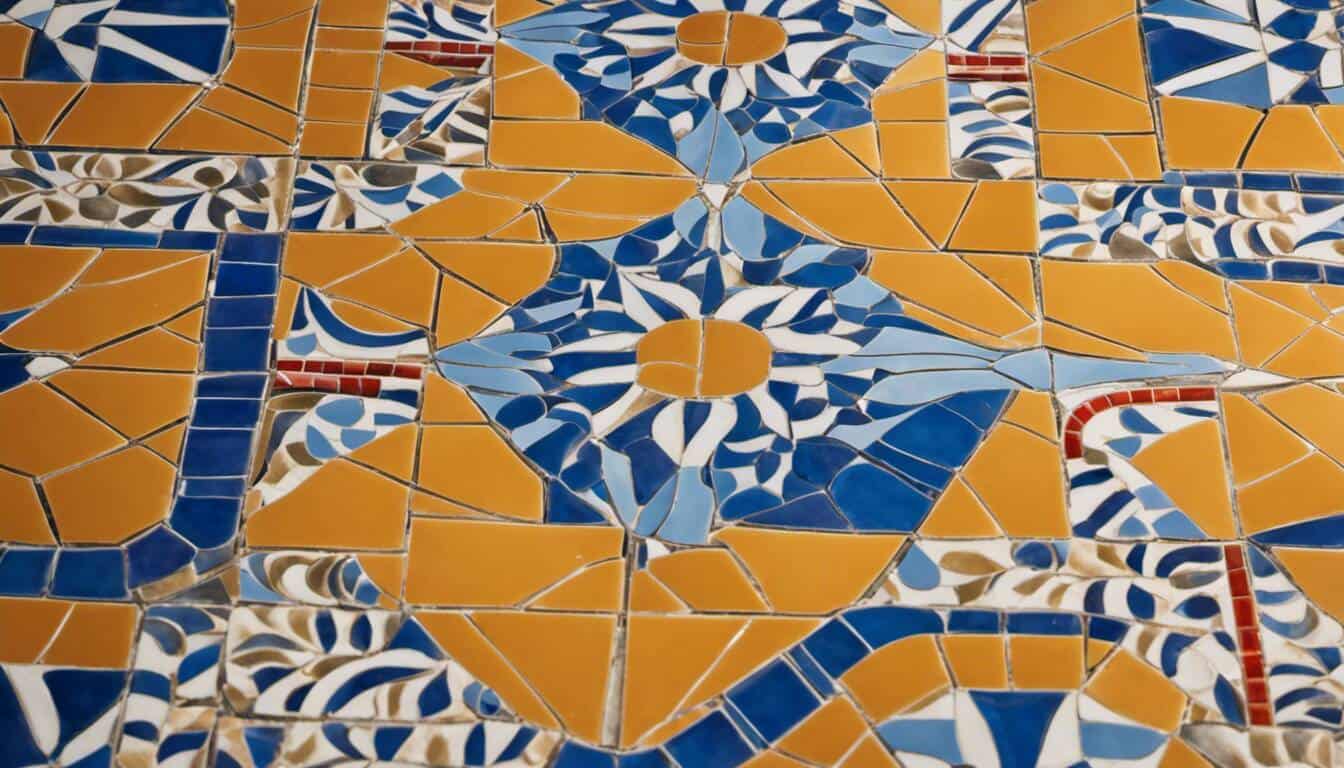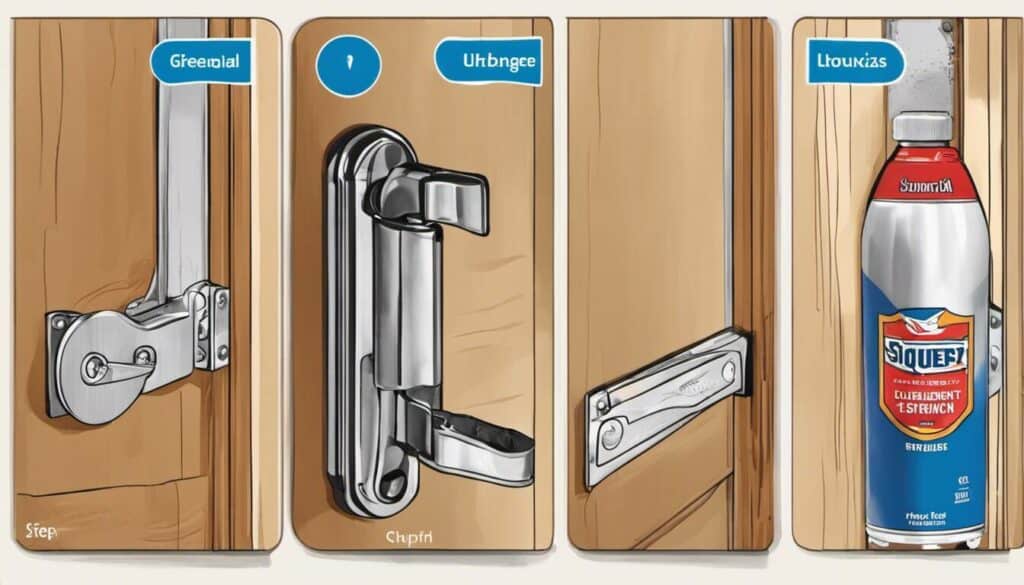For some DIY home projects, not every narrative ends with a triumphant flourish. Sometimes, ambition can outpace skill, resulting in a mosaic of mishaps and straight up errors. Little did I know grout would prove to be a formidable opponent for a DIY enthusiast like me. I painfully recount my saga to pass on the lessons learned through misplaced trust, underestimation, and an abundance of obstinate grout. It’s a reminder that humility and preparation are just as crucial as ambition!
“When Grout Betrayed Me: A Tile Tale” is an article that discusses the frustrating experience of discovering issues with grout after having floor tiles laid. It details potential causes of the problem and offers suggestions for addressing it. The article aims to help readers learn from this experience and avoid similar issues in their own home maintenance projects.

“Remember, the success of any tile flooring project lies in the diligent preparation of the grout. It’s all about consistency—like a good, thick pancake batter. And never, under any circumstances, forget to seal your grout post-installation. These simple steps, executed correctly, can make the difference between a DIY triumph and a flooring disaster.”
Augustus Jacquot, Flooring Specialist
The Pitfalls of Tile Installations
Tile installations can be a great way to elevate the aesthetics and functionality of your space. However, without proper knowledge and execution, this DIY project can quickly turn into a flooring disaster. Understanding the potential pitfalls of tile installations is crucial to avoid costly mistakes and ensure a successful outcome.
One common pitfall is inadequate surface preparation. Properly cleaning, leveling, and priming the surface before installing tiles is essential for adhesion and durability. Neglecting these steps may result in tiles that don’t adhere properly or uneven surfaces that cause cracks and displacements over time.
Another pitfall lies in improper tile layout. Ensuring a well-planned layout before starting the installation helps achieve symmetry, balance, and visual appeal. Without proper planning, you may end up with awkward cuts, narrow tile pieces, or misaligned patterns that are visually unappealing.
It’s also important to consider the type of tile adhesive or mortar used. Choosing the wrong adhesive for your specific tile type or not applying it correctly can lead to issues such as tiles popping out or grout cracking prematurely.
Now that we’ve explored some pitfalls to watch out for during tile installations, let’s dive into how trouble started in our particular case.
How Trouble Started
In our flooring adventure, trouble began when we decided to fix loose tiles in our shower. Thinking we could handle it ourselves, we purchased a matching batch of Mapei Ultracolor Plus FA grout – the same one used during the original installation when the bathroom floor was done.
Prying off loose tiles revealed that water had penetrated beneath them leaving a damp and weakened area on the substrate. We promptly removed any damaged portions and replaced them with fresh cement backer board before proceeding with reinstallation.
Feeling confident that our repair had been successful, we proceeded to grout the repaired area using the same batch of grout as the original installation. However, to our surprise and disappointment, the grout in the repaired section turned out noticeably darker than the rest of the bathroom floor.
At this point, we were left wondering what could have caused such a stark difference in coloration. One possibility we considered was that the thinset used during tile replacement may have caused discoloration in the grout. However, without a clear answer, we decided to investigate further to understand and address the issue.
Early Signs of Issues
Identifying early signs of issues with grout is crucial in preventing a full-blown flooring disaster. Keep a keen eye out for any discoloration or staining on the grout lines. These could be indicators of potential moisture penetration, leading to weakened grout and possibly loose tiles. Additionally, be observant of any cracking or crumbling in the grout. These issues may suggest improper installation or inadequate preparation before grouting. It’s essential to address these early warning signs promptly to prevent further damage and costly repairs.
Now that we are aware of the early signs to watch out for, let’s explore the approach in grout cleaning to maintain the integrity and longevity of your flooring.
- According to a survey conducted by National Tile Contractors Association (NTCA) in 2023, poor grout application and problems related to it account for nearly 22% of all complaints regarding tile installations.
- The NTCA also reported that regrouting solves the major issue only 35% of times when the problem is not due to initial faulty application but other reasons such as pets or type of tiling.
- A study conducted in 2021 found that issues with floor tiles constitute 40% of all flooring material issues reported by homeowners, indicating the commonality of grout-related difficulties.
Approach in Grout Cleaning
Maintaining clean and well-maintained grout not only enhances the visual appeal of your tiled floor but also helps prolong its lifespan. When it comes to cleaning grout, it is important to choose suitable tools and techniques that won’t cause further damage.
A gentle approach is advised, using non-abrasive cleaners specifically designed for grout. Avoid harsh chemicals or abrasive scrubbing pads that can erode or scratch the surface of the grout.
Start by sweeping or vacuuming the area to remove loose dirt and debris. Then, apply a mild grout cleaner diluted with water following the manufacturer’s instructions. Allow it to sit for a few minutes to penetrate and loosen any stains or dirt and debris. Then, apply a mild grout cleaner diluted with water following the manufacturer’s instructions. Allow it to sit for a few minutes to penetrate and loosen any stains or dirt.
Next, use a soft-bristle brush or an old toothbrush to gently scrub the grout lines. Work in small sections at a time, being careful not to apply excessive pressure that could dislodge or damage the grout.
After scrubbing, rinse the area with clean water and thoroughly dry it with a towel or mop. This step is crucial as leaving residual cleaner on the grout can lead to residue buildup over time.
Regular maintenance and cleaning can help prevent the accumulation of dirt, stains, and grime, keeping your grout clean and in good condition.
Tools and Techniques
When it comes to tackling tile flooring projects, having the right tools and techniques can make all the difference in achieving a successful outcome. Before diving into your tile restoration journey, it’s important to gather a few essential tools and techniques can make all the difference in achieving a successful outcome. Before diving into your tile restoration journey, it’s important to gather a few essential tools. A notched trowel or spreader will come in handy for applying adhesive or mortar to secure the tiles. A tile cutter or wet saw is necessary for making precise cuts when fitting tiles around edges or obstacles. Additionally, ensure you have grout float for applying grout between tiles and a sponge for cleaning off excess grout. Lastly, don’t forget to have safety equipment like gloves and goggles to protect yourself during the process.
In terms of techniques, it’s crucial to start with proper surface preparation. Ensure that the floor is clean, free from any debris, and level before proceeding with tile installation. This will help the tiles adhere better and result in a more aesthetically pleasing finish. When applying adhesive or mortar, be sure to follow manufacturer instructions regarding mixing ratios and application methods. Applying too much adhesive can cause tile slippage or uneven surfaces, while too little can lead to poor adhesion.
Now that we’ve covered the importance of tools and techniques, let’s dive into the efforts required in restoring tile vibrance.
Efforts in Restoring Tile Vibrance
Over time, even the most well-maintained tiled floors may begin to lose their vibrance due to factors like wear and tear, stains, or fading colors. Restoring that beautiful tile vibrance requires some effort but can breathe new life into your space.
One common method used in tile restoration is utilizing bleach for stain removal. However, it’s essential to exercise caution when using bleach as it can discolor certain types of tiles or damage grout if not diluted properly. Conduct a patch test first in an inconspicuous area before proceeding with bleaching the entire floor.
Once the stains have been addressed, sealing the tiles and grout can help protect them from future discoloration and staining. There are various sealants available in the market specifically designed for different types of tiles. Be sure to select one that is suitable for your particular tile material and follow the manufacturer’s instructions for application.
Remember, restoring tile vibrance is not a one-time effort but an ongoing process. Regular cleaning, maintenance, and addressing any issues promptly will help keep your tile floors looking vibrant and beautiful for years to come.
- Restoring the vibrance of tile floors requires effort, including addressing stains using bleach with caution through patch testing, selecting a suitable sealant to protect against future discoloration, and ongoing maintenance through regular cleaning and prompt issue resolution.
Utilizing Bleach and Sealants
When it comes to cleaning and maintaining grout, many homeowners turn to bleach as a powerful solution for removing stains and discoloration. While bleach may seem like an effective option, it can actually have detrimental effects on grout over time. Bleach is highly corrosive and can weaken the integrity of the grout, leading to cracks and deterioration. Additionally, using sealants on grout is a common practice to prevent staining and water damage. However, improper application or choosing the wrong type of sealant can also cause issues. It’s important to use bleach and sealants cautiously and according to manufacturer instructions to avoid compromising the quality of your grout.
Outcomes and Lessons from Grout Failures
Grout failures can result in frustration and disappointment for homeowners who have invested time and money into a tile project. Understanding the possible outcomes of grout failures can serve as valuable lessons for future tile installations.
One potential outcome of grout failures is the development of cracks or gaps within the grout lines. This not only affects the aesthetics of the tiles but also compromises the structural integrity of the floor or wall. Moisture can seep through these cracks, leading to further damage, such as mold growth or tile loosening.
Another consequence of poor grout installation or maintenance is discoloration. Over time, grout can become discolored due to improper cleaning methods, exposure to harsh chemicals, or lack of regular sealing. Discoloration not only diminishes the overall look of a tiled surface but also indicates potential underlying issues with the grout’s durability.
For instance, if a homeowner notices powdery residue or crumbly grout that can easily be removed with a fingernail, it could indicate subpar installation or inadequate bonding between the tiles and grout.
Learning from these outcomes, it becomes clear that proper installation techniques, regular maintenance, and choosing suitable grout options are essential for a successful tile project. It’s crucial to ensure that the grout is mixed correctly, applied evenly, and sealed properly to minimize the risk of future failures.
Just like a meticulously crafted puzzle, each piece of the tiling process must fit snugly together to achieve a beautiful and long-lasting result. From preparing the surface to selecting the appropriate grout and sealants, attention to detail at every step can prevent potential pitfalls down the road.





A fine DIY floor tiling project needs patience: remember it took me nine hours to correctly lay out my kitchen floor, but the result was worth every meticulous minute spent on it!
I absolutely second that, Randolf. My first attempt at grouting my bathroom had me at it for close to twelve hours resulting in a stiff back and sore knees for days after, but the outcome was worth it all! It’s never about how quickly you get it done, but how well you do it and the satisfaction derived thereafter.
I fully resonate with you, Whitley—detail and precision over speed any day; those twelve hours were doubtless a rewarding investment when you beheld the perfect finish!
I know grout woes all too well! While redoing my vintage bathroom’s floor tiles, I grossly underestimated the amount of time it would take to properly apply and finish the grout—it’s not just about filling gaps but finessing it too! In my case, haste made waste; I had to remove and redo all the hasty grouting after it started cracking in a couple days.
Nolan, your observation is right on track! Applying grout isn’t a race against time but rather a test of craftsmanship. I remember during my second flooring re-do project, I too struggled with grout application, making it uneven and hasty, but you bet I learned my lesson. Remember, patience becomes virtue especially when dealing with grout!